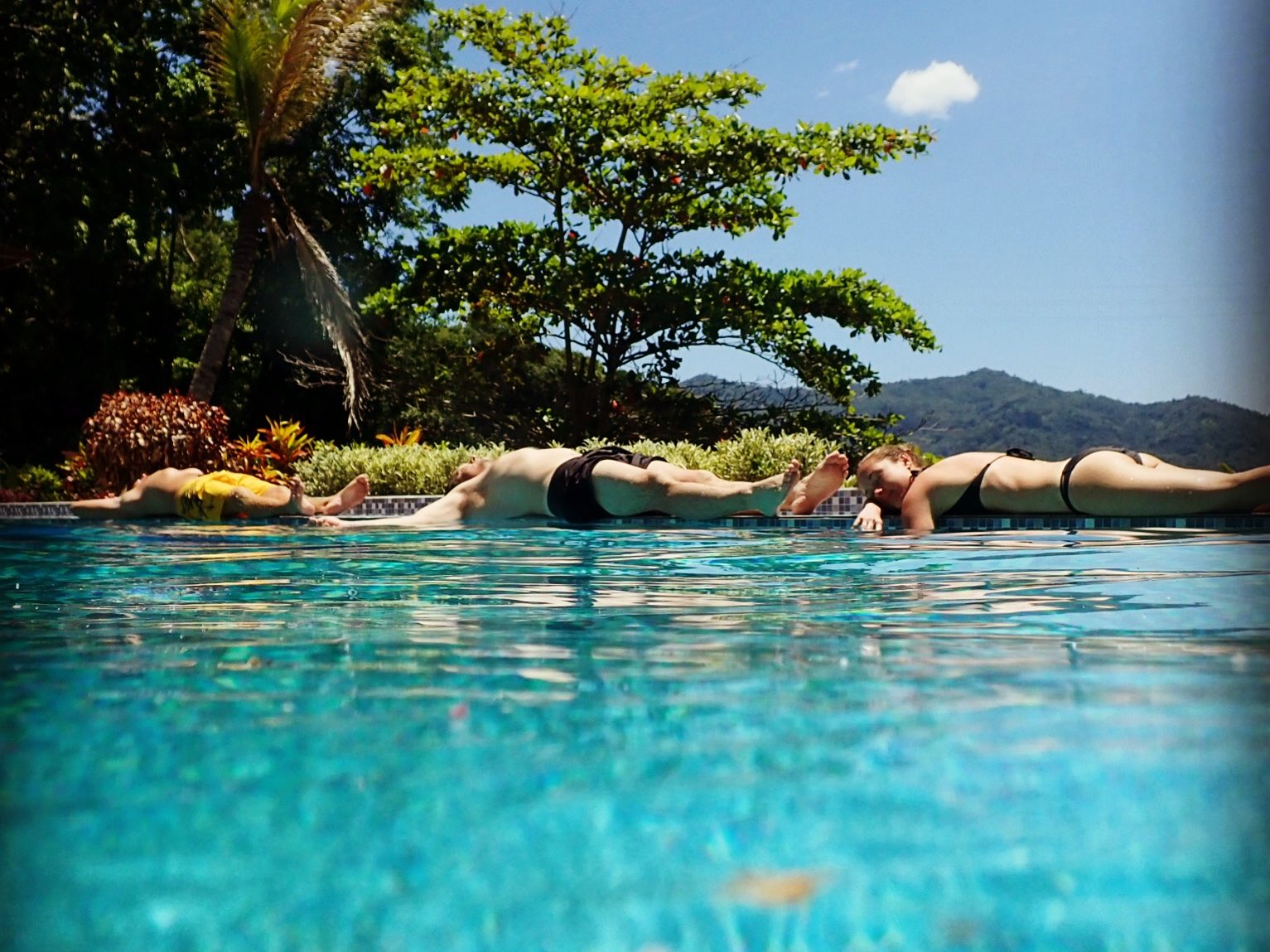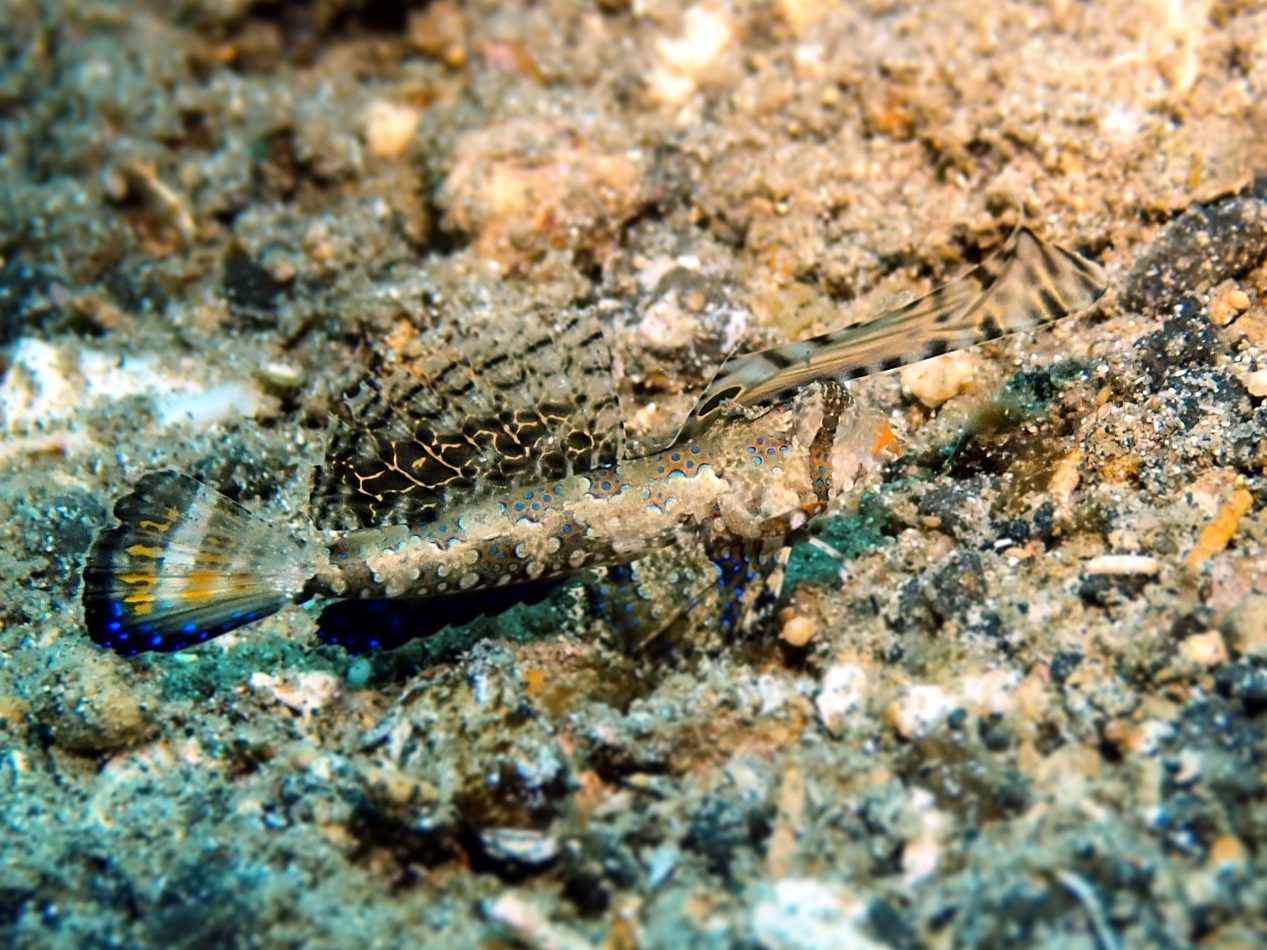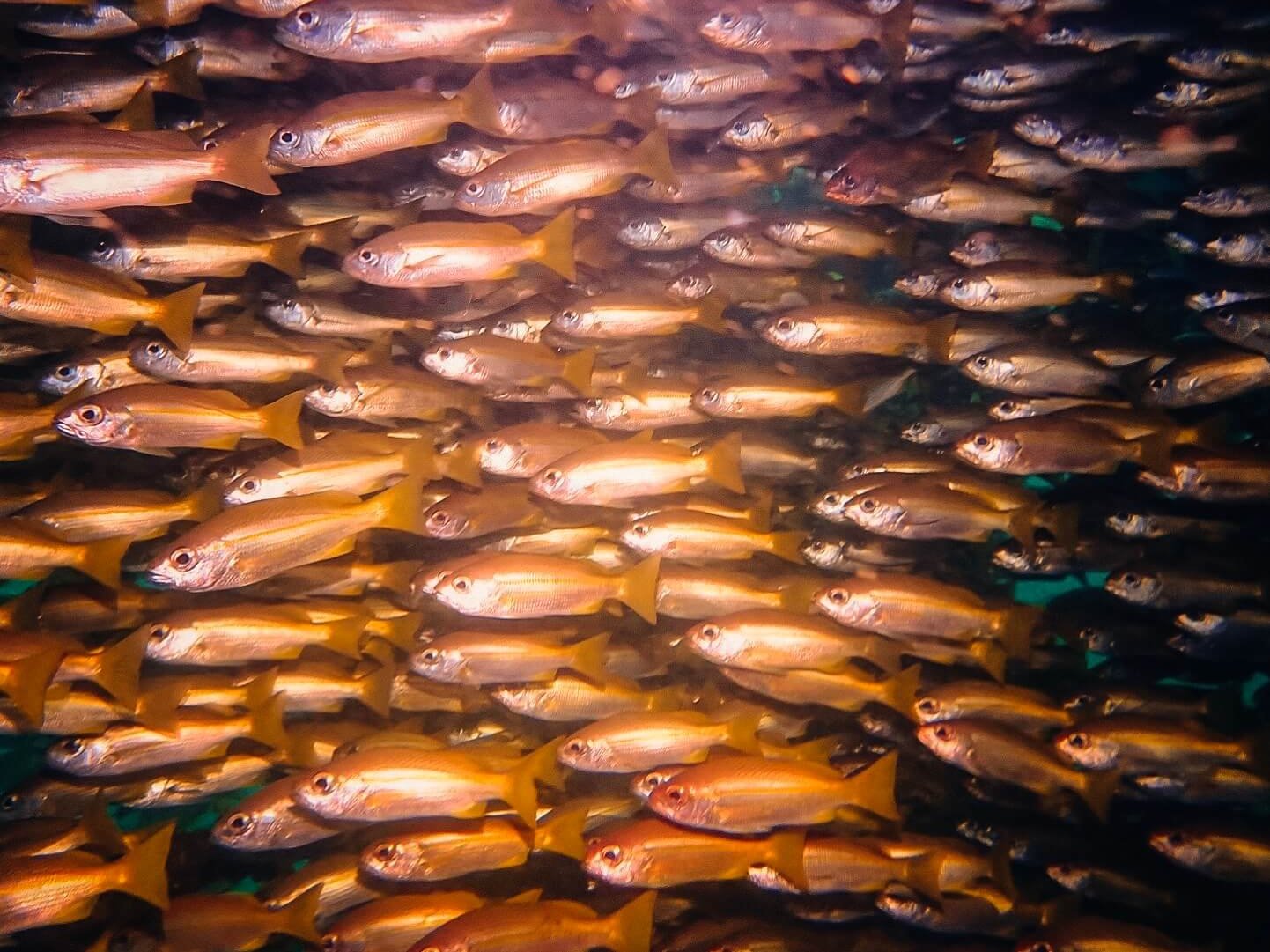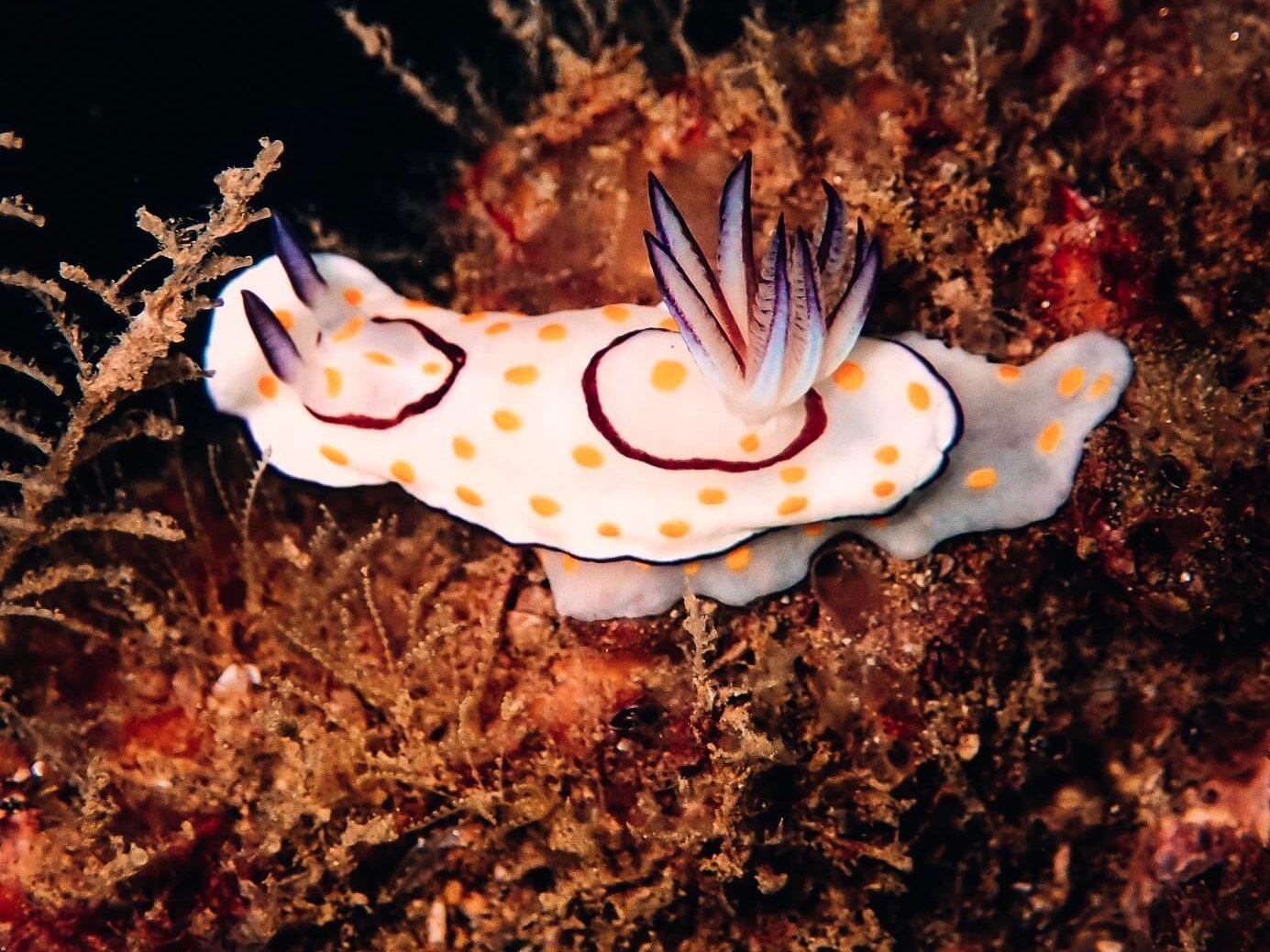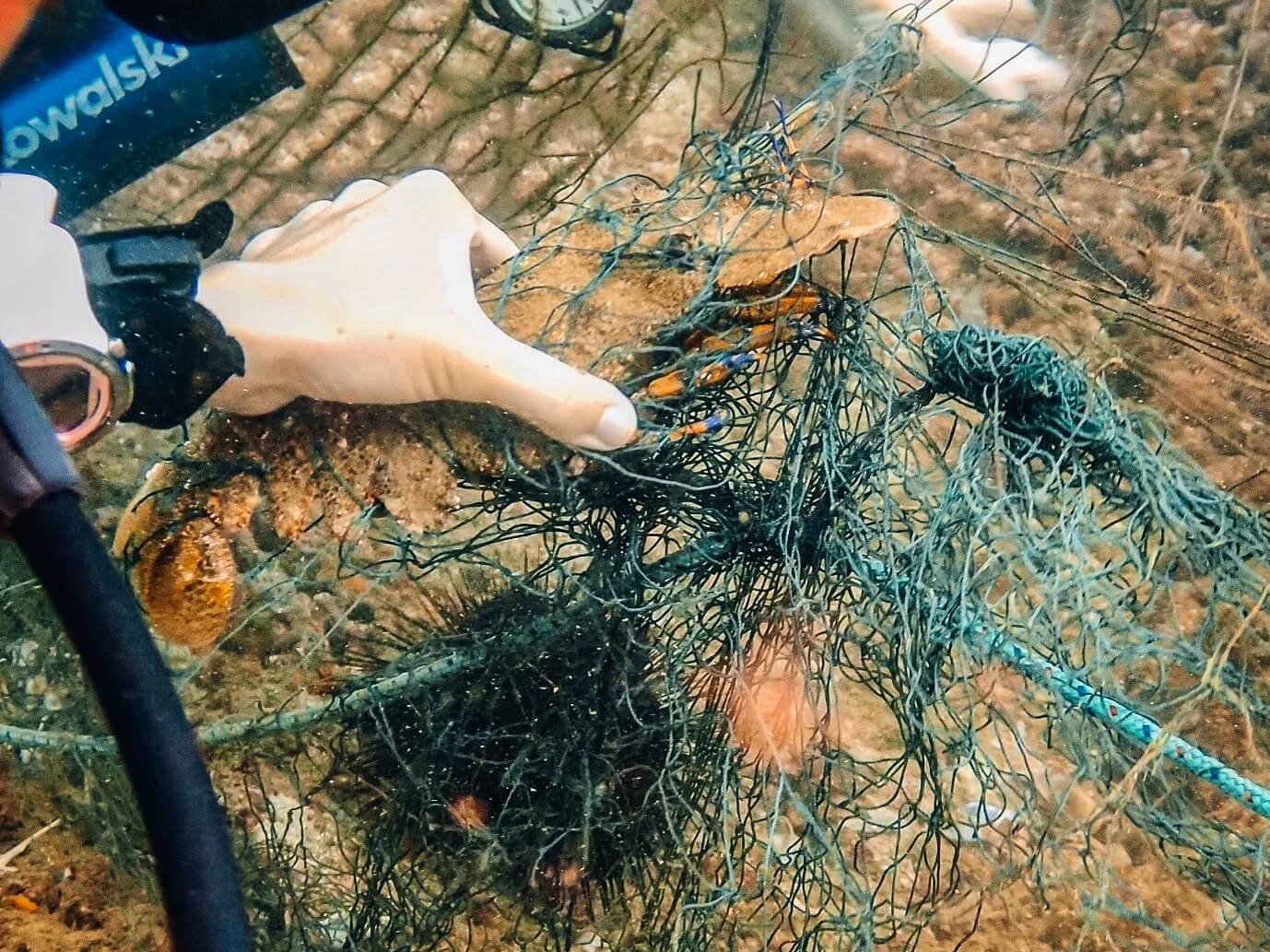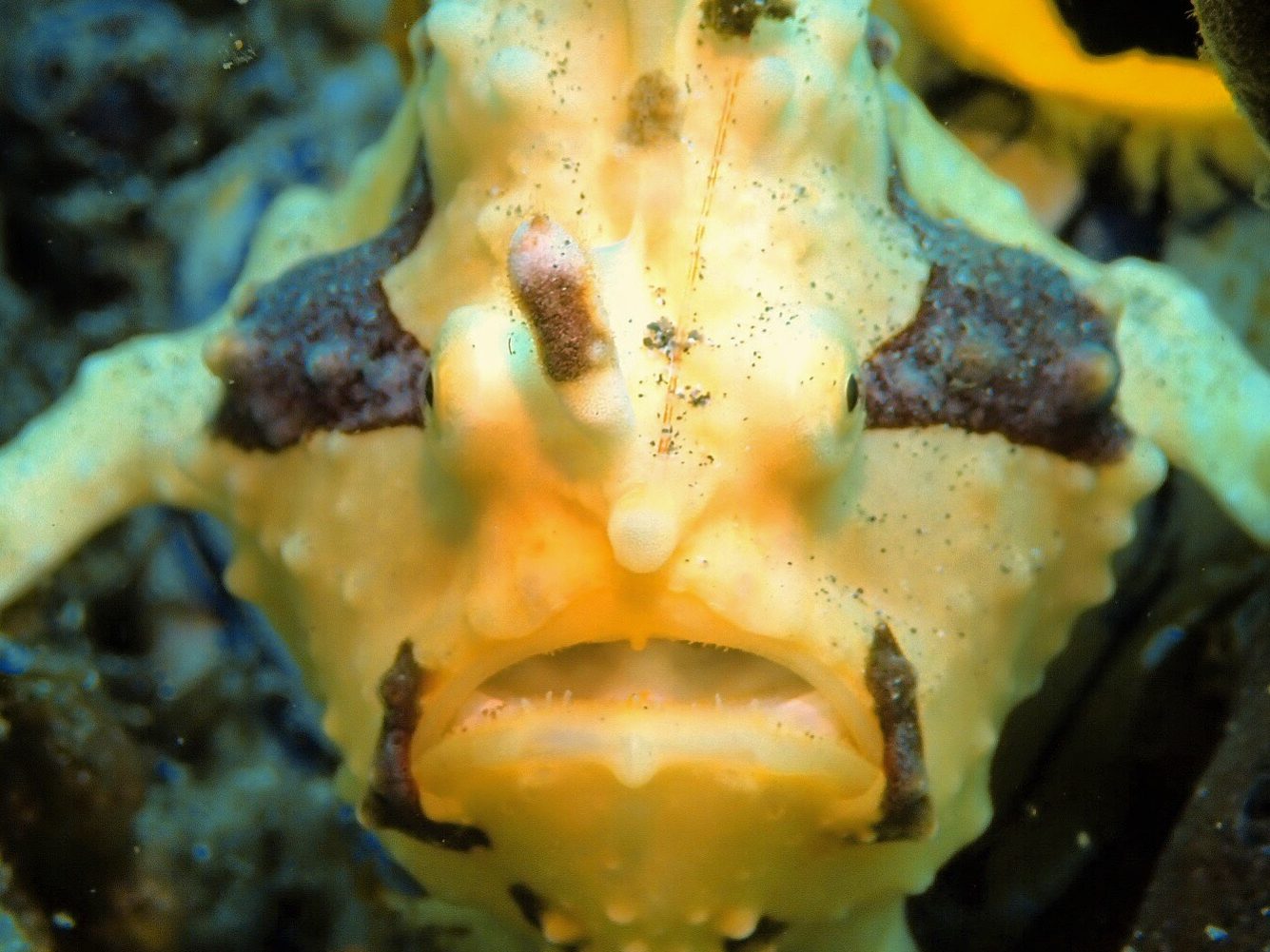
The Bizarre and Beautiful World of Muck Diving and Frogfish
When people envision scuba diving, they probably see crystal clear blue water, a reef full of corals in every color and texture, and a kaleidoscope of various fish in every hue of the rainbow. Perhaps a turtle is munching algae off of a rock. Perhaps a shark cruises along the reef. Everything looks like an aquarium.
What they probably don’t envision is the mucky, sandy bottom of a strait that hosts a busy boat port. Why would anyone ever want to dive in a place like that? Because that muck is home to a weird and wonderful assortment of critters. Some of these critters are miniature specs of color that stand out against the black, volcanic sand if you look closely enough. Some of these critters blend in so perfectly with their surroundings that you don’t even realize you are looking at a living organism at all until it moves. And this particular strait in all the world, is considered the muck diving capital, the place to which divers from around the globe flock with massive cameras and wishlists of random and obscure animals that they hope to find. Welcome to Lembeh.
We dropped in on our first dive and muck it was: nothing but sandy bottom with sparse patches of seaweed. It wasn’t even the pretty white sand either, but black, volcanic muck. The first ten minutes or so, the guides didn’t point out much, a couple nudibranchs that weren’t anything we hadn’t already seen before. I hovered above the sand, eyes scanning the monochrome landscape for something to look at, anything. Disappointment slowly settled and I wondered if we were in for a week of searching through black sand for hours at a time, only to find a couple critters per dive. In a coral reef setting, big ticket items like sharks are usually only spotted once every dive or two. Why should I have though that this would be any different?
And then it was as if everyone completed their Ant-Man transformations and zoned into the tiny world at once. The guides and my dive buddies alike had all found interesting critters to point out. I didn’t know where to look first. I hardly had time to search for anything myself, because as soon as I would finish photographing one creature, I’d look up to find someone waving me over to the next one.
I had really been looking forward to experiencing muck diving, but thought I knew what I was getting myself into. So it came as a great surprise to find that it surpassed all my expectations. When you are diving reefs, your wildlife viewing is limited to what swims by, and how long it chooses to stick around; usually as long as it takes to swim from one end of your field of view to the other. A moment later it is gone. When you find a critter in the muck, nine times out of ten it isn’t going anywhere quickly. You get to sit there and watch it all day if it suits you. For this reason, on both dives that first day, the time flew by so quickly that I never even glanced at my dive computer. (This is one of those instances when you should not follow my example. Always check your computer frequently.) I had absolutely no concept of how much time had passed. Being a person who is eternally cold, I usually reach a point halfway though the dive when I’ve had my fun and start counting down how long until I can warm up in the sun again. Those first dives I was shocked both times when I saw the group start to shallow up, and looked at my computer to see that we had already been underwater for over an hour. Where in the world had an hour gone so quickly? Time had never passed so instantaneously, and repeatedly so for every dive.
The first day diving Lembeh showed me my first frogfish, something I had been aching to see for years. I got to see three of them, actually. Now forget everything you think you know about fish, because the frogfish is a weird blob of a creature that seems to defy all the normal rules of being a fish. It is a blob with a face and the camouflaging talents of a chameleon, color-changing included. Some of them are as small as marbles. The giant species get to be well over a foot! (We didn’t find any of those though). Sometimes they blend in with coral, sometimes they look like a bit of sponge.
| Looks like the orange sponge you use to defog your mask, right? (Painted Frogfish, Antennarius pictus) |
Their first dorsal fin spine has evolved into a carrot on a stick basically, to dangle in front of anything it feels like eating. You’d be surprised at just what it can eat too, with a mouth that can open up to twelve times its resting size. Check out this video on YouTube.
| Hairy frogfish waving his little nose lure around. (Antennarius striatus) |
Unlike most fish, the frogfish lacks a swim bladder. The swim bladder is a sack of air inside most fish that allows them to control their buoyancy. The frogfish is stuck waddling around on the bottom, with modified pectoral fins that look like little feet, aided by the use of jet propulsion, which they pull off by sucking in water and forcing it through their backward facing gills.
| Birds-eye shot of a warty frogfish (Antennarius maculatus). See his little feet holding him in place? |
The first frogfish I ever saw was so well blended into the little rock he was on that I could barely make him out, even staring straight at him. It took a lot of editing the color contrast (with my novice skills) to make him visible in the photo. Even so, I know what I’m looking at and so he seems visible. Can you spot the fish?
| Can you find the frogfish? Hint: look for the tail fin in the upper left corner. (Antennarius nummifer) |
| Here’s a closeup of his pretty face. (Antennarius nummifer) |
The second one Fletch found. He’d seen many frogfish before, but had never found one himself, so he was excited. This little guy was much smaller, but also much easier to see, as he didn’t blend into his surroundings at all. This one was bright white with little orange feet, which really popped against the drab, brown backdrop (say that three times fast).
| Juvenile Warty Frogfish (Antennarius maculatus) |
The third underwater froggy was the largest of the bunch, and I saw him out of the corner of my eye while Stefan was taking photos. He had disappeared into the clump of coral on which he was residing by the time I had my camera ready for him though.
I’ll leave you with the rest of my frogfish photos from the trip, because I think rather than blogging day by day, I’m going to have to blog critter by critter from here on out.
| Staring down into the abyss, contemplating life. (Antennarius maculatus) |
| Spotfin Frogfish (Antennarius nummifer) |
| Face shot of another warty frogfish. Look at his cute little nose! (Antennarius maculatus) |
| How about this face shot of a hairy frogfish? (Antennarius striatus) |
| A different hairy frogfish. (Antennarius striatus) |
| This poor little warty frogfish was just sort of laying sideways in the sand. He forgot how to frogfish. (Antennarius maculatus) |


